Related Research Articles

Demopolis is the largest city in Marengo County, in west-central Alabama. The population was 7,162 at the time of the 2020 United States census, down from 7,483 at the 2010 census.
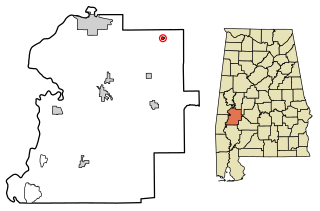
Faunsdale is a town in Marengo County, Alabama, United States. At the 2020 census the population was 90, down from 98 in 2010. Faunsdale is home to a community of Holdeman Mennonites, the such community outside of Greensboro, Alabama. The town has the only Holdeman Mennonite Church in the area, Cedarcrest Mennonite Church.

The Northern Neck is the northernmost of three peninsulas on the western shore of the Chesapeake Bay in the Commonwealth of Virginia. The Potomac River forms the northern boundary of the peninsula; the Rappahannock River demarcates it on the south. The Northern Neck encompasses the following Virginia counties: Lancaster, Northumberland, Richmond, and Westmoreland; it had a total population of 50,158 as of the 2020 census.
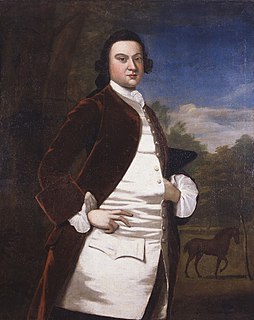
William Byrd III was a prominent Virginia planter and member of the House of Burgesses.

Mount Airy, near Warsaw in Richmond County, Virginia, constructed in 1764 for Colonel John Tayloe II, perhaps the richest Virginia planter of his generation, is a mid-Georgian plantation house, the first built in the manner of a neo-Palladian villa. John Ariss is the attributed architect and builder. Tayloe's daughter, Rebecca and her husband Francis Lightfoot Lee, one of the only pair of brothers to sign the Declaration of Independence are buried on the estate, as are many other Tayloes. Before the American Civil War, Mount Airy was a prominent racing horse stud farm, as well as the headquarters of about 10-12 separate but interdependent forced-labor plantations along the Rappahannock River. Mount Airy is listed on the National Register of Historic Places as a National Historic Landmark as well as on the Virginia Landmarks Register and is still privately owned by Tayloe's descendants.

St. Andrew's Episcopal Church, also known as St. Andrew's Church is a historic church building on County Highway 12 in Prairieville, Alabama. Built by slaves in 1853, it is a remarkably well-preserved example of Carpenter Gothic architecture, its design apparently taken from a book by Richard Upjohn. St. Andrew's was added to the National Register of Historic Places on November 7, 1973, and was declared a National Historic Landmark on the same day. Public access is allowed to this National Historic Landmark.

Faunsdale Plantation is a historic forced-labor plantation near the town of Faunsdale, Alabama, United States. This plantation is in the Black Belt, a section of the state developed for cotton plantations. Until the U.S. Civil War, planters held as many as 186 enslaved African Americans as laborers to raise cotton as a commodity crop.

Cedar Crest, also known as Cedar Crest Farms, is a Greek Revival plantation house located near Faunsdale, Alabama. It was built for Kimbrough Cassels Dubose in 1850 by Albert Prince, a slave. Dubose, born in Darlington District, South Carolina was educated at the preparatory school of Prof. Stafford who later was of the faculty of the University of Alabama. His wife was Miss Elizabeth Boykin Witherspoon also of Darlington District, South Carolina, and they had seven sons and four daughters: John Witherspoon, James Henry, Jr., Eugene, Nicholas William, Francis Marion, Lemuel Benton and Edwin Dargan-the daughters Louisa, Rosalie, Augusta and Adele. The plantation was worked by the forced labor of as many as 130 enslaved persons. The house is one-and-a-half stories with side gables, but has been simplified. It originally had side wings, with adjoining porches across the front. These were removed in 1939, leaving the small central front portico. Another historic plantation house, Altwood, was moved from a nearby location to the Cedar Crest grounds in 1988. The house was added to the National Register of Historic Places on August 5, 1993, as a part of the Plantation Houses of the Alabama Canebrake and Their Associated Outbuildings Multiple Property Submission.
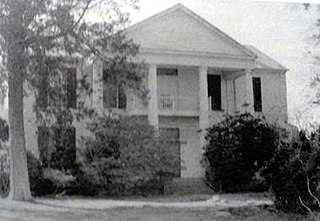
Cedar Haven was a historic Greek Revival plantation house located near Faunsdale, Alabama. It was built in 1850 by Phillip J. Weaver. Weaver was a prominent merchant and planter. He was born in Mifflintown, Pennsylvania in 1797 and relocated to Selma from Uniontown, Maryland in 1818. He ran a very successful store in Selma and also maintained a home there. Weaver was the paternal grandfather of the artist Clara Weaver Parrish.
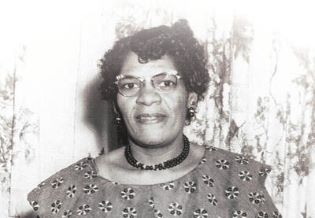
Aurelia Shines Browder Coleman was an African-American civil rights activist in Montgomery, Alabama. In April 1955, almost eight months before the arrest of Rosa Parks and a month after the arrest of Claudette Colvin, she was arrested for refusing to give up her bus seat to a white rider.

Hawthorne, also known as the Browder Place, is a historic Italianate plantation house and historic district in Prairieville, Alabama, USA. This area of Hale County was included in Marengo County before the creation of Hale in 1867. Hawthorne is included in the Plantation Houses of the Alabama Canebrake and Their Associated Outbuildings Multiple Property Submission. It was added to the National Register of Historic Places on July 7, 1994, due to its architectural significance.

Benjamin "Ogle" Tayloe was an American businessman, bon vivant, diplomat, scion of colonial tidewater gentry, and influential political activist in Washington, D.C. during the first half of the 19th century. Although he never held elective office, he was a prominent Whig and influential in presidential electoral politics in the 1840s and 1850s. His home, the Tayloe House, became a salon for politically powerful people in the federal government and socially influential individuals in the United States and abroad. Tayloe was also a party in the important 1869 contract law case, Willard v. Tayloe, 75 U.S. 557.

A plantation complex in the Southern United States is the built environment that was common on agricultural plantations in the American South from the 17th into the 20th century. The complex included everything from the main residence down to the pens for livestock. Until the abolition of slavery, such plantations were generally self-sufficient settlements that relied on the forced labor of enslaved people.

Colonel John Tayloe II was a planter and politician, among the richest planters in colonial Virginia. He served in public office including the Virginia Governor's Council, also known as the Virginia Council of State.
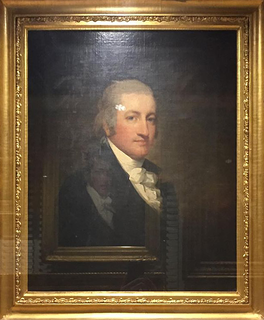
John Tayloe III, of Richmond County, Virginia, was a planter, politician, businessman, and tidewater gentry scion. He was prominent in elite social circles. A highly successful planter and thoroughbred horse breeder, he was considered the "wealthiest man of his day". A military officer, he also served in the Virginia House of Delegates and Senate of Virginia for nine years. The Tayloe family of Richmond County, including his father, John Tayloe II, and grandfather, John Tayloe I, exemplified gentry entrepreneurship.

Henry Augustine Tayloe was an American planter, slaveholder, horse breeder and racer, and land speculator in Alabama during the 19th century.

Edward "Thornton" Tayloe was an American Diplomat, planter and scion of colonial tidewater gentry. He was named after his godfather, Edward Thornton a friend and fellow student of his father's at Eton College and His Majesty's ambassador to Washington D.C. He owned estates in King George County, Virginia and the Canebrake. He was the private secretary to Joel Roberts Poinsett during his time as the first minister to Mexico. He married his first cousin, Mary Ogle, at Belair Mansion Prince George's Co., Maryland during Christmas in 1830.

Winney Grimshaw was an enslaved African-American woman at Mount Airy Plantation in Richmond County, Virginia. The Grimshaws are one of the most well-documented enslaved families who lived at Mount Airy. Though the Grimshaws were a well-regarded slave family at Mount Airy, it wasn't enough to keep their master from dissolving her family ties.

Margaret Mercer was an American abolitionist and educator. She worked to end slavery and freed the Maryland slaves that she inherited from her father, sending six of them to Africa. Mercer started a school and a chapel in Loudoun County that welcomed black people and continued for a short while after her death. In 2018, a Virginia historical marker was dedicated in her honor.
Michelle Browder is an American artist and activist known for her sculptures in Montgomery, Alabama, and historical tours of the area.
References
- 1 2 3 "Freetown Historical Marker". The Historical Marker Database. Retrieved September 14, 2022.
- 1 2 3 4 5 6 7 8 Windham, Ben (March 21, 2009). "Southern Lights: Going from the funeral of a blues legend to Freetown". Tuscaloosa News . Retrieved September 14, 2022.
- ↑ Patton, Sharon F. (1998). African-American Art. Oxford University Press. ISBN 9780192842138.
- 1 2 "Freetown exists once more". Demopolis Times. July 22, 2005. Retrieved September 14, 2022.
- ↑ McDonald, George (Aug 31, 2022). "Fire Destroys Historic Church, Congregation Eyes Rebuild". ABC32. Retrieved September 14, 2022.
- ↑ Harrell, Sumner; Poitevint, Bobby (August 19, 2022). "'Historic' church a total loss after large fire in Gallion community". WBMA. Retrieved September 15, 2022.
